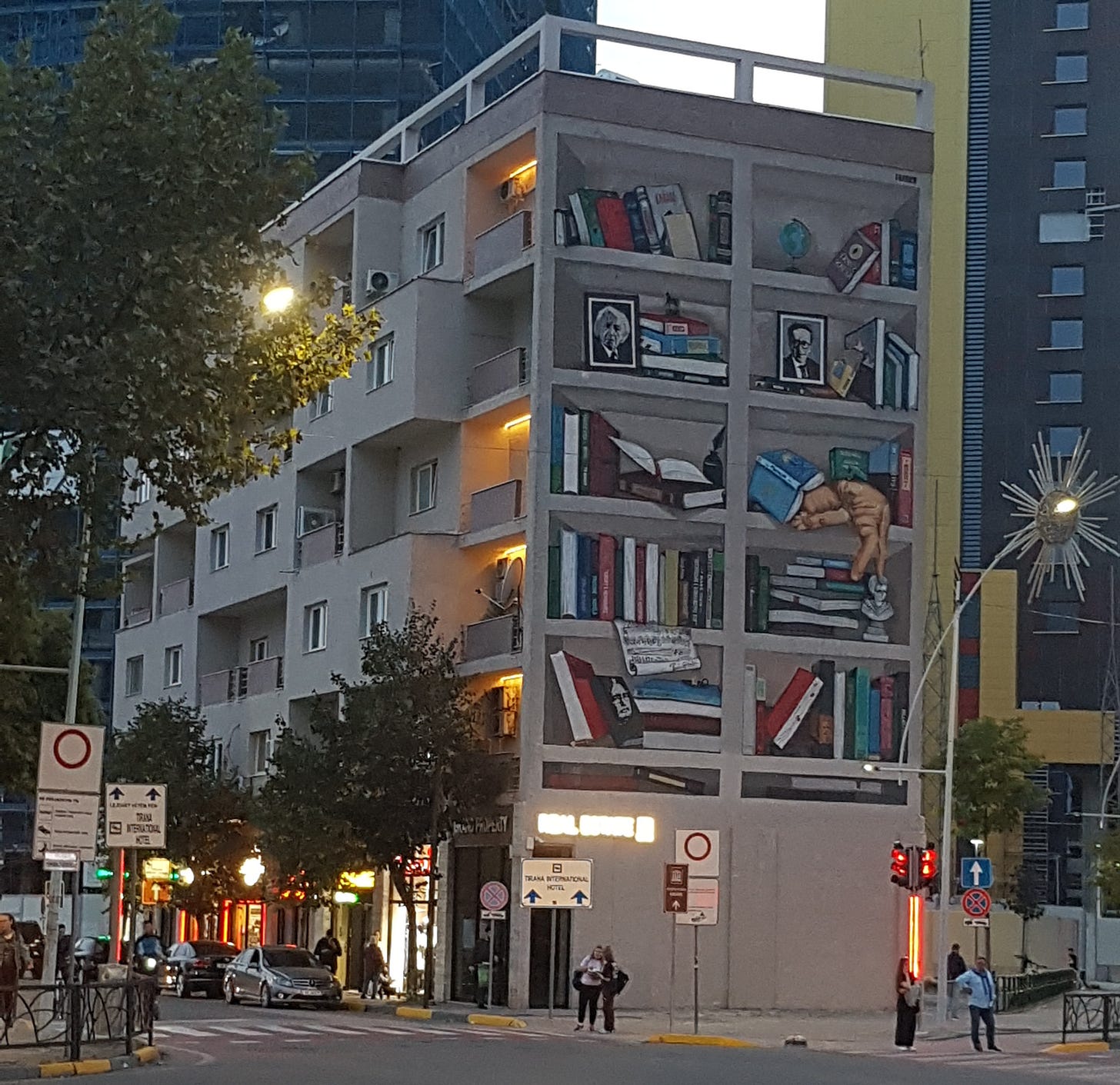The Palace of Cubes
In the heart of Tirana
Tirana has its own geometry. There's a concrete pyramid, a long slow rectangle of a river, a historic square and, just behind the Opera House, there's the Palace of Cubes.
At first glance, it’s an ordinary apartment block on Dibra Street, designed by the architect, painter and writer Maks Velo in 1972. A French-Albanian, Velo designed many civic buildings in Tirana so his influence is visible wherever you go. But trouble began for him with his design of the Palace. It was deemed too Western and ‘exhibited modernist tendencies and concepts’ and, as if that wasn’t bad enough, one of the apartments contained a fireplace, forbidden in residential blocks. He was denounced by the authorities, later arrested and then imprisoned for ten years.
Despite these repercussions, the Palace became a powerhouse of Albanian cultural life. Writers, artists and composers lived there during the communist period, including Ismail and Helena Kadare. In 2019 their old apartment was opened as a museum dedicated to their lives and the spirit of the building. Ismail is a prolific writer whose works have been translated and published around the world. Helena is an important screenwriter, translator and journalist. Her work is less known outside Albania but she captures the essence of the Hoxha years in personal detail.
Having moved to Paris in 1990 they recently returned to Tirana. It must be a strange experience, living close to a museum that exhibits your work and life in a place where you lived, worked and raised your family for 20 years. As though someone is writing your obituary in the corner of your life.
They lived there during the most oppressive years of the Hoxha regime when to speak or behave out of turn was to risk denunciation, imprisonment or death. Amongst their closest and most trusted friends, they dared, quietly and secretly, to rename Dibra Street as ‘Broadway’. Helena writes: ‘A fascinating cover turned up in the bookstores of Tirana, beautiful in its yellow draped over brown, a book titled One Night on Broadway. She goes on to say that their ‘Broadway of Tirana, the poorest and the dimmest in the world had, despite its harsh condition, an inner radiance unmatched by any other place.’
In their apartment - with its forbidden and criminal fireplace - the Kadares must have lived their lives in a state of creative danger, always fearing a knock at the door. That same door is now wide open and for 500 lek you can visit this extraordinary space. Someone has painted a mural of a bookcase on the end wall of the Palace. Books slip and slide off the shelves, asking to be read, while a ginger cat sleeps under the covers of a book, oblivious to the roar of traffic and the jackhammers of adjacent building sites.
Is someone still whispering about that forbidden Broadway in Tirana? Can you hear their hushed voices inside the Palace of Cubes? It's worth going there to find out.




Went to the Palace of Cubes, can’t believe how central it is, how close to the surveillance in the House of Leaves. What it must have been like to live here under such a repressive regime. I went straight to the bookshop in the Opera House and bought Kadare’s ‘A Dictator Calls’, looking forward to reading his work!
We’ve just been to visit the Palace of Cubes and re-read this piece straight after. It’s such a wonderful description of the building and its inhabitants!